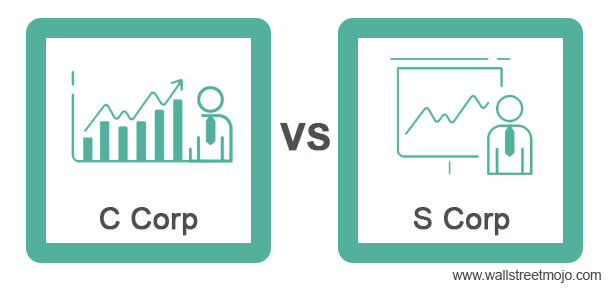Section 1202 of the IRS tax code details the QSBS exemption, which allows investors in a C-Corporation to deduct their qualified small business stock (QSBS) gains on tax returns. How can an S-Corporation convert to a C-Corporation to take advantage of the Section 1202 gains exclusion? What will conversion mean for the owners and investors? Let’s look at when it makes sense and the tax consequences of doing it.
Why do startups register as an S-Corporation?
If your startup is likely to be very profitable from year 1, you can avoid paying self-employment taxes on any net taxable income if you register as an S-Corp. S-Corp distributions are tax-free as long as there is sufficient basis and they also allow the qualified business income (QBI) deduction.
The downsides of registering your startup as an S-Corp include:
- The need to file two tax returns, personal and corporate.
- Limited to 100 shareholders.
- All owners must be U.S. residents.
- Only allowed to issue one class of stock.
- Owners must be paid a reasonable W-2 amount, which is subject to payroll taxes.
Why convert your company from an S-Corp to a C-Corp and what are the risks?
We recommend converting to a C-Corp if a company wants to issue qualified small business stock and plans on selling its business in no less than five years. We also recommend converting to a C-Corp if owners are looking to raise significant funds through debt or equity (to go public, for example) and want to issue more than one type of stock (voting, non-voting, preferred, etc.)
In order to utilize the Section 1202 QSBS deduction, QSBS requirements state that it has to be held for at least five years. In addition to tracking the conversion date of the company, to satisfy the 5-year minimum, it’s critical that companies issue any new stock from the C-Corp. It’s not enough to just change the tax classification of the S-Corp by checking the box on Form 8832. QSBS, in order to qualify for the 1202 exemption, has to be issued as new shares from the newly formed entity.
We don’t recommend converting an S-Corp to a C-Corp if a company is:
- Not planning to sell its business
- Highly profitable
- Taking out a significant amount of distributions/dividends
If a company with these attributes converted to a C-Corp, they would pay 21% on their net taxable income and an additional 23.8% tax on any distributions/dividends taken for a total tax of about 40%. If this company instead remained an S-Corp, they would only be taxed at a total rate of roughly 30% (assuming they utilize the QBI deduction). In most cases, saving 10% on taxes annually and remaining a S-Corp is preferable.
To help a company decide if they should convert from an S-Corp to a C-Corp, the most important question is: What are your future plans for the company and do you want to sell it eventually?
How do you convert from an S-Corp to a C-Corp to issue QSBS?
The first and most important step is to hire a good legal team. If the process isn’t handled correctly, by experienced attorneys, the ultimate goal of QSBS deductions and tax reduction may not come to fruition. QSBS must be issued as new shares while classified as a C-Corp. The method we see most often is for the assets of the S-Corp to be moved to a newly formed C-Corp, then the C-Corp issues stock to the S-Corp. The S-Corp itself then becomes a shareholder of the C-Corp and will qualify for the QSBS exemption at the S-Corp level.
We previously wrote about converting an LLC to a C-Corp, which is a much simpler process that tends to cost less than converting from a S-Corp to C-Corp. With an LLC, the filing fee is usually a few hundred dollars (plus legal fees) and requires less paperwork. Converting from an S-Corp to a C-Corp requires the revocation letter or creation of a second entity and can cost tens of thousands of dollars to complete correctly.
What are the tax savings from converting an S-Corp to a C-Corp?
Here’s an example that shows the taxes owed by Adam, who is issued stock in ABC Company in 2023 and holds it for six years. In 2029, ABC company has $2 million in net income and sells for $10 million. This also assumes ABC Company qualifies for QBID.
| ABC Company Shareholders | Initial Stock Basis (2023) | Percentage |
| Adam | $1,000,000 | 100% |
| C-Corporation | S-Corporation | |
| Federal Tax on Net Income | $420,000 ($2,000,000 x 21%) | $592,000 ($2,000,000 x 29.6%) |
| Federal Tax on Sale of Stock | $0 | $1,800,000 ($9,000,000 x 20%) |
| Total 2029 Federal Tax | $420,000 | $2,392,000 |
| Additional Tax Owed as a S-Corp vs. a C-Corp | $1,972,000 | |
Additionally, the below tax would apply to the C-Corporation if the net cash is distributed to the owner ($2M of operating profit less $420,000 of federal taxes) but there is an opportunity to mitigate the tax by leaving the cash in the business for the buyer. In contrast, the S-Corporation is not taxed on amounts distributed to the owner as long as there is sufficient basis.
| Additional tax considerations: | C-Corporation | S-Corporation |
| Federal Tax on Cash Distributed by Owner | $376,040 ($2,000,000-420,000 x 23.8%) | $0 |
How common is it to convert from a C-Corp to an S-Corp?
Converting from a C-Corp to an S-Corp is fairly common, especially for owners who plan to take distributions from their company. However it’s important to note that if a C-Corp converts to an S-Corp, they would forfeit the QSBS Section 1202 deduction. But the conversion may still be worthwhile and allow them to pay up to 10% less in taxes if they structure things correctly.
Are you considering registering your startup as a S-corp, or considering the conversion to a C-Corp? We’ve walked many companies through the process and work closely with experienced legal professionals to get it done properly. Schedule an appointment with us to learn more about your options.





